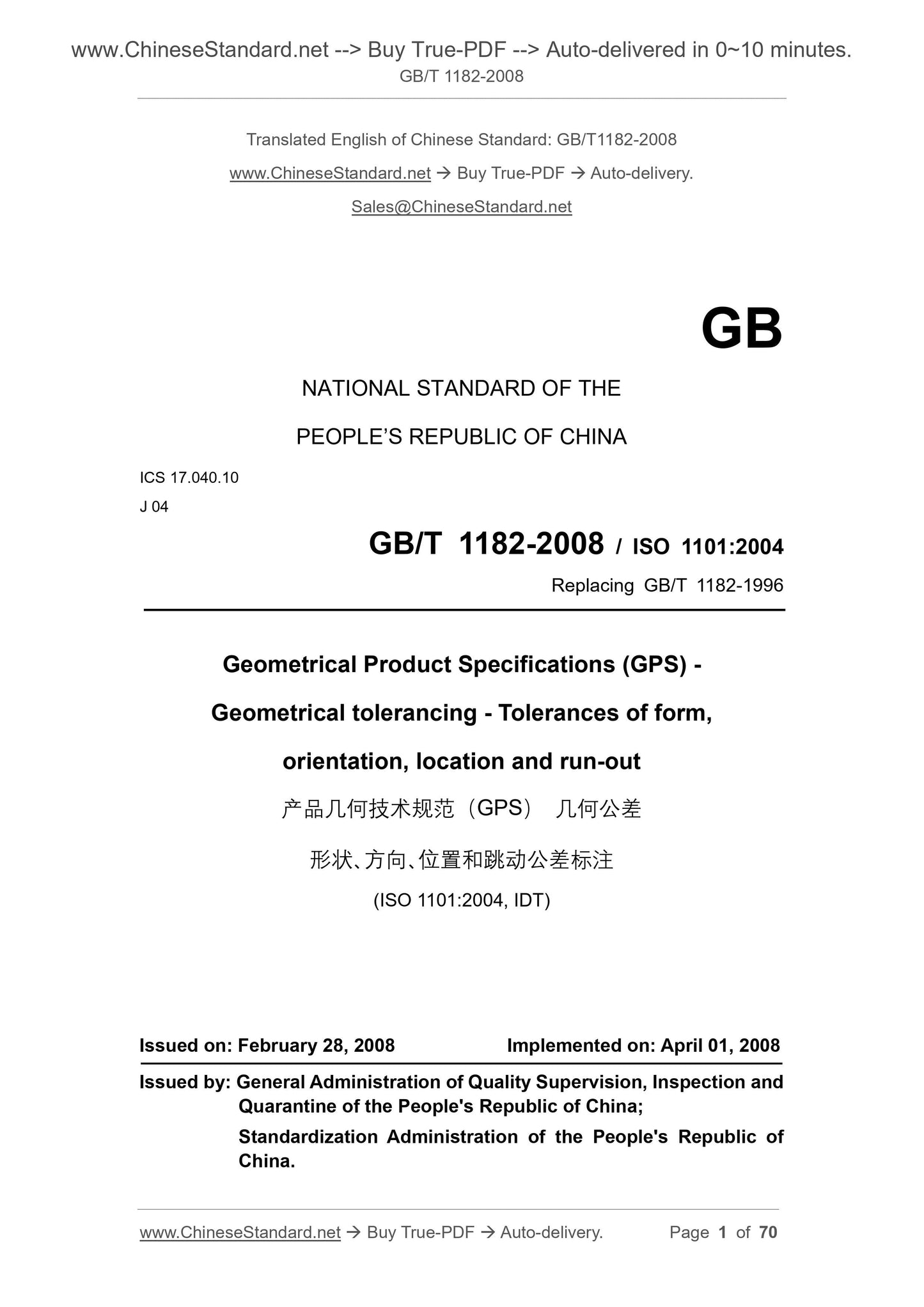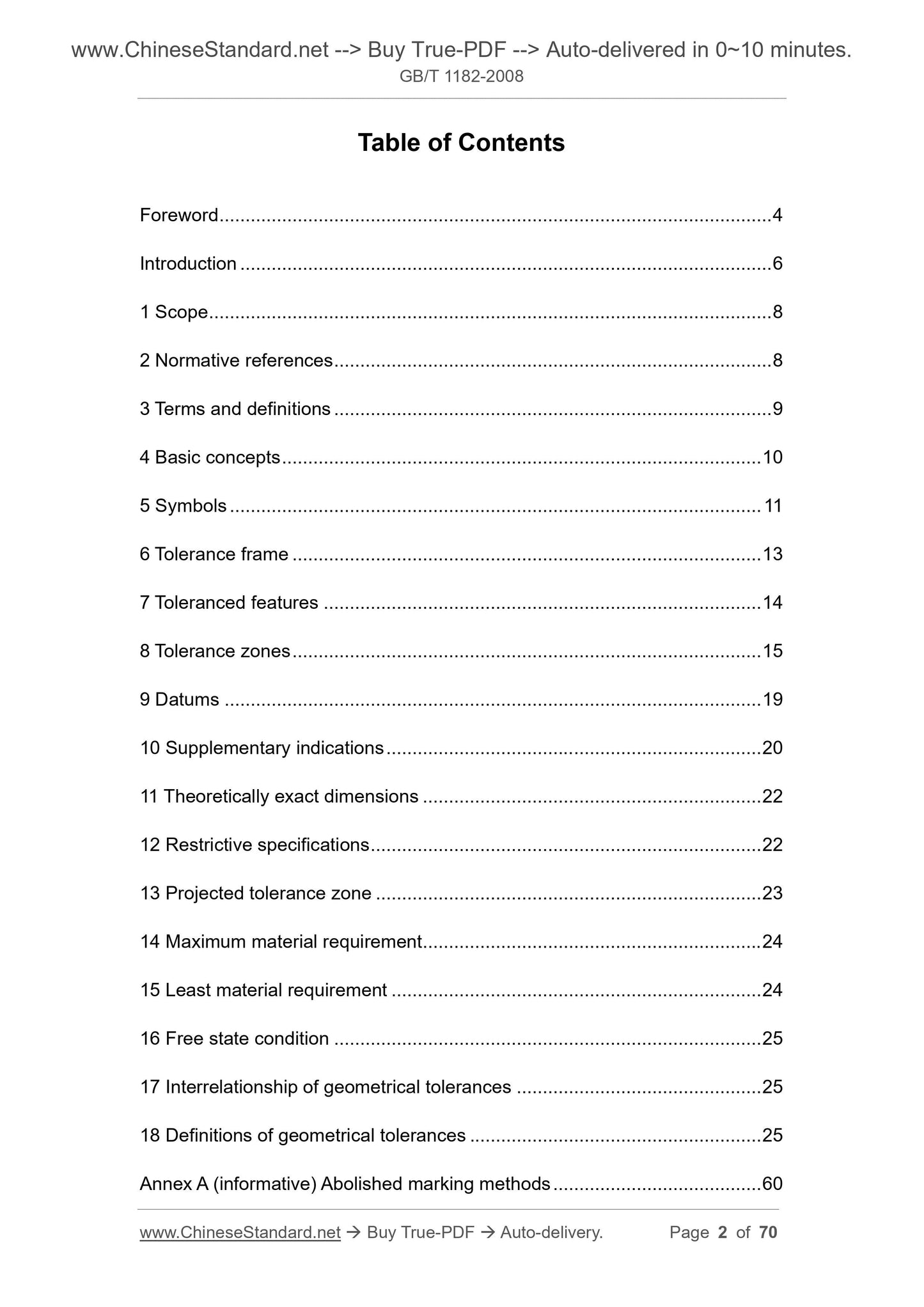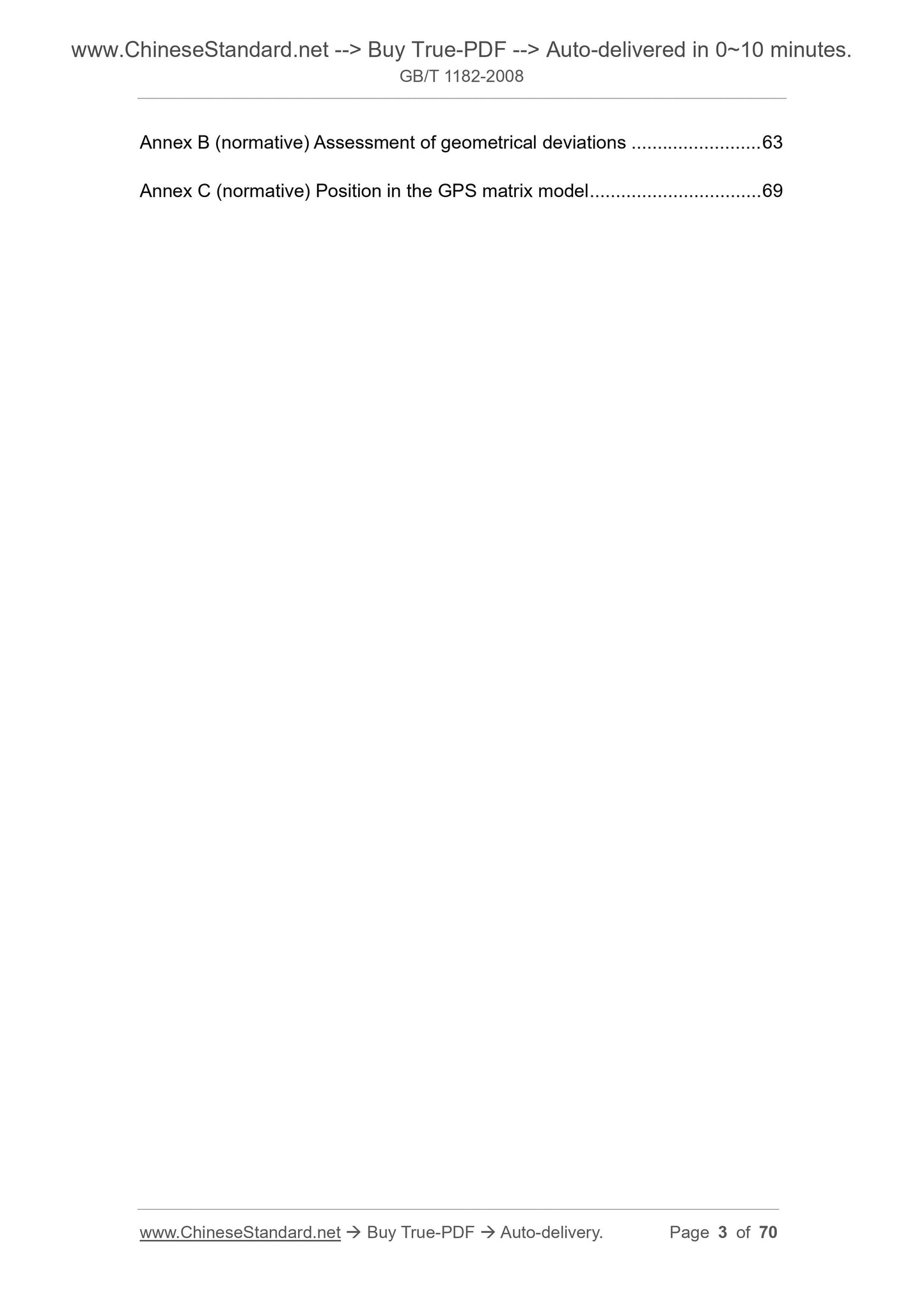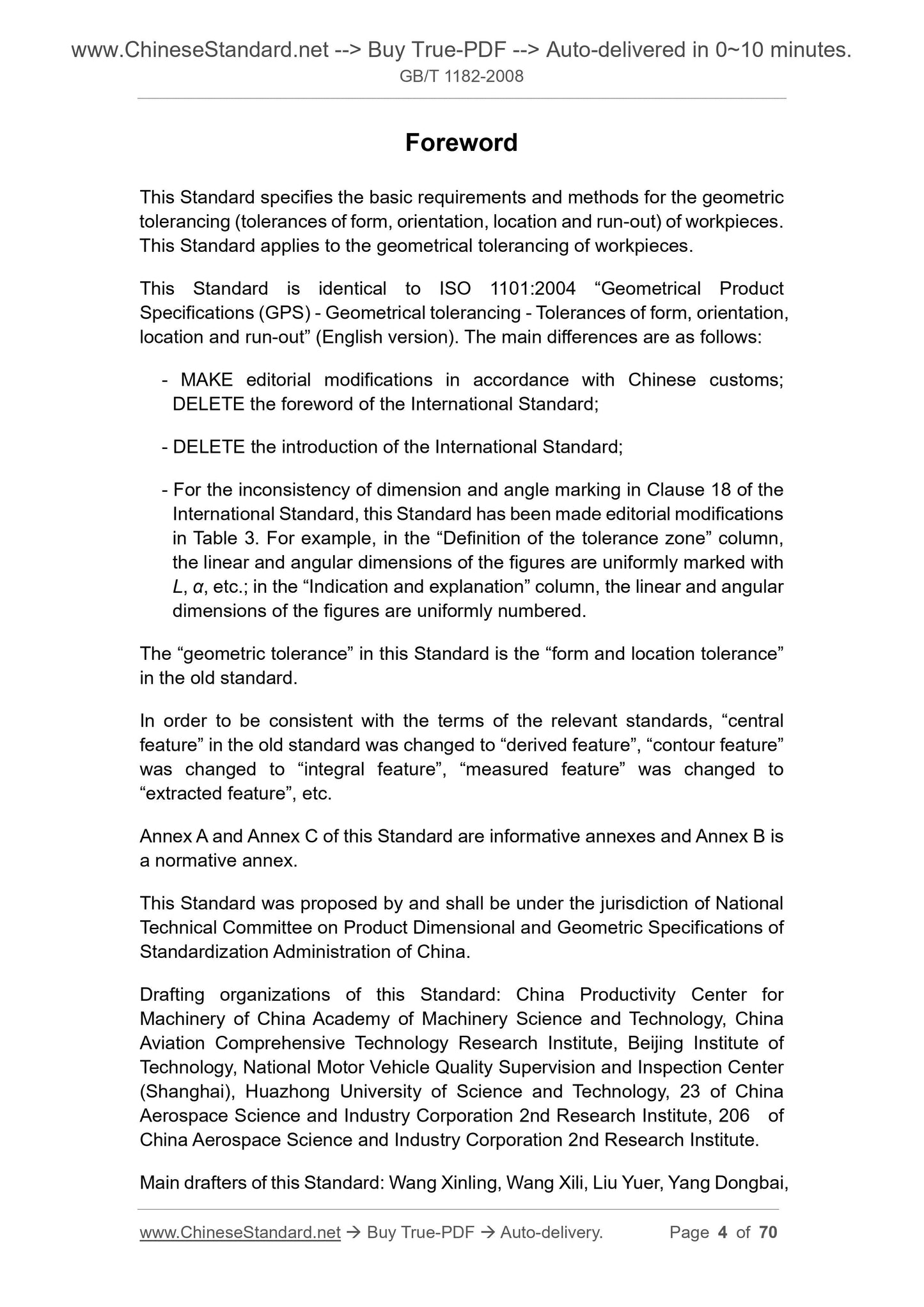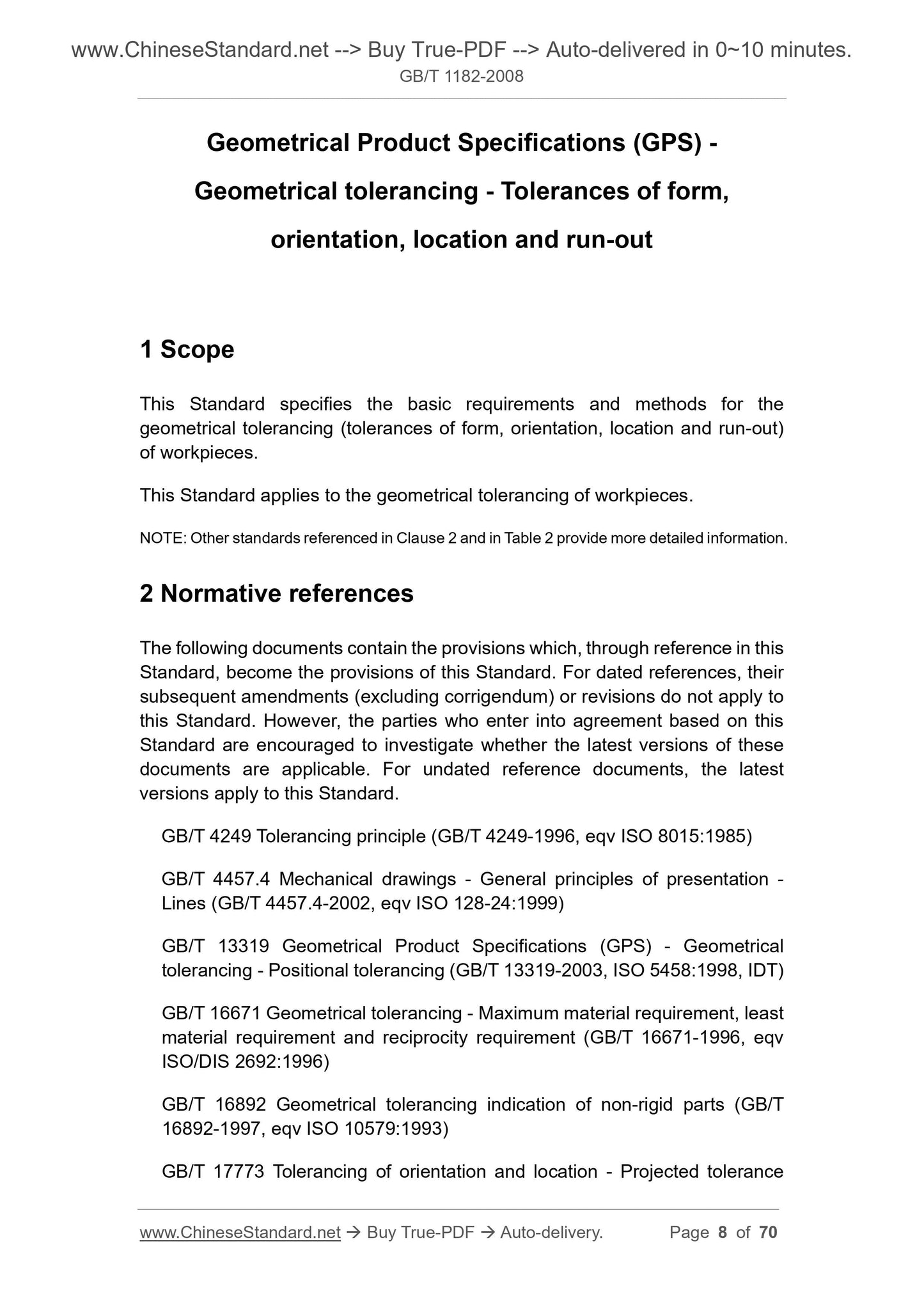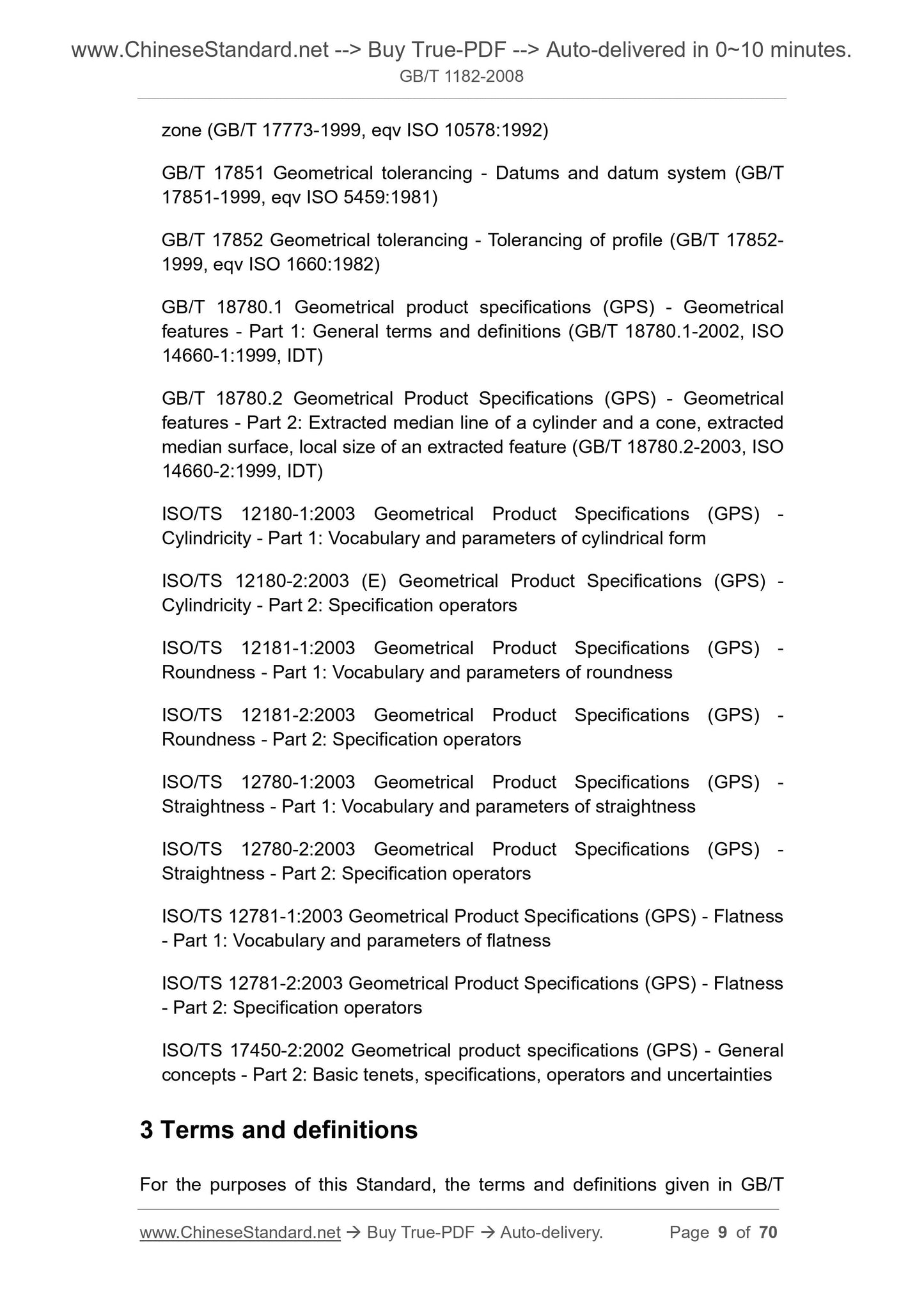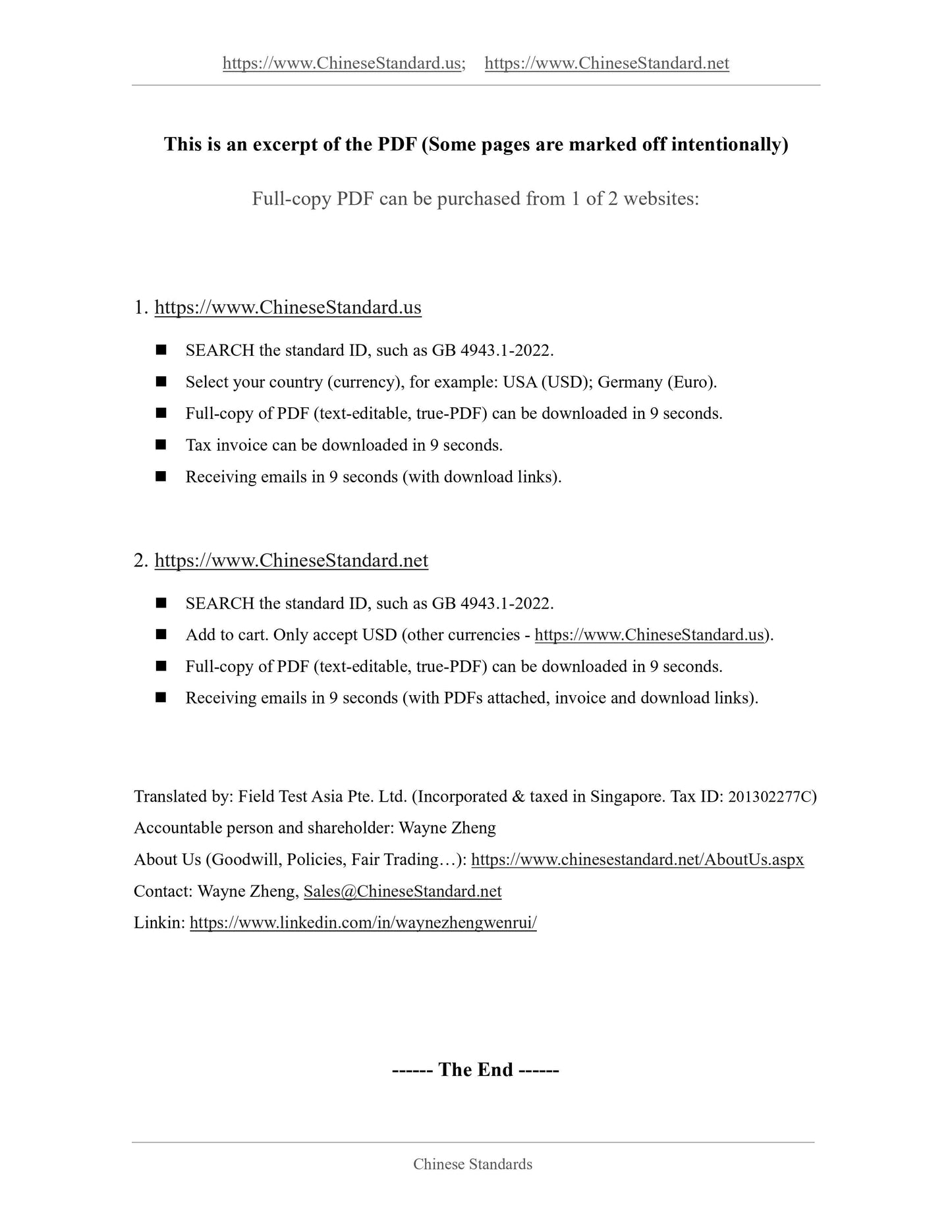1
/
of
7
PayPal, credit cards. Download editable-PDF and invoice in 1 second!
GB/T 1182-2008 English PDF (GB/T1182-2008)
GB/T 1182-2008 English PDF (GB/T1182-2008)
Regular price
$170.00
Regular price
Sale price
$170.00
Unit price
/
per
Shipping calculated at checkout.
Couldn't load pickup availability
GB/T 1182-2008: Geometrical Product Specifications (GPS) -- Geometrical tolerancing -- Tolerances of form, orientation, location and run-out
Delivery: 9 seconds. Download (and Email) true-PDF + Invoice.Get Quotation: Click GB/T 1182-2008 (Self-service in 1-minute)
Newer / historical versions: GB/T 1182-2008
Preview True-PDF
Scope
This standard specifies the basic requirements and methods for the geometric tolerances (shape, direction, position and runout tolerance) of the workpiece.This standard applies to geometric tolerance marking of workpieces.
Note. The standards quoted in Chapters 2 and 2 give more detailed information.
Basic Data
| Standard ID | GB/T 1182-2008 (GB/T1182-2008) |
| Description (Translated English) | Geometrical Product Specifications (GPS) -- Geometrical tolerancing -- Tolerances of form, orientation, location and run-out |
| Sector / Industry | National Standard (Recommended) |
| Classification of Chinese Standard | J04 |
| Classification of International Standard | 17.040.10 |
| Word Count Estimation | 54,587 |
| Date of Issue | 2008-02-28 |
| Date of Implementation | 2008-08-01 |
| Older Standard (superseded by this standard) | GB/T 1182-1996 |
| Quoted Standard | GB/T 4249; GB/T 4457.4; GB/T 13319; GB/T 16671; GB/T 16892; GB/T 17773; GB/T 17851; GB/T 17852; GB/T 18780.1; GB/T 18780.2; ISO/TS 12180-1-2003; ISO/TS 12180-2-2003 (E); ISO/TS 12181-1-2003; ISO/TS 12181-2-2003; ISO/TS 12780-1-2003; ISO/TS 12780-2-2003; ISO/TS 12781-1-2003; GB/T 6930-2002; GB/T 7811-2007 |
| Adopted Standard | ISO 1101-2004, IDT |
| Regulation (derived from) | Announcement of Newly Approved National Standards No. 3 of 2008 (No. 116 overall) |
| Issuing agency(ies) | General Administration of Quality Supervision, Inspection and Quarantine of the People's Republic of China, Standardization Administration of the People's Republic of China |
| Summary | This standard specifies the workpiece geometry tolerancing the basic requirements and methods. This standard applies to the workpiece geometry tolerancing. |
Share
